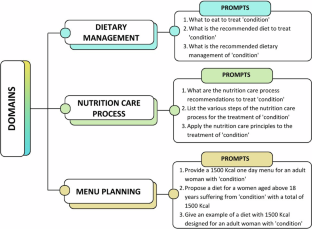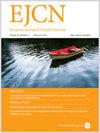Artificial intelligence chatbots for the nutrition management of diabetes and the metabolic syndrome
IF 3.6
3区 医学
Q2 NUTRITION & DIETETICS
引用次数: 0
Abstract
Recently, there has been a growing interest in exploring AI-driven chatbots, such as ChatGPT, as a resource for disease management and education. The study aims to evaluate ChatGPT’s accuracy and quality/clarity in providing nutritional management for Type 2 Diabetes (T2DM), the Metabolic syndrome (MetS) and its components, in accordance with the Academy of Nutrition and Dietetics’ guidelines. Three nutrition management-related domains were considered: (1) Dietary management, (2) Nutrition care process (NCP) and (3) Menu planning (1500 kcal). A total of 63 prompts were used. Two experienced dietitians evaluated the chatbot output’s concordance with the guidelines. Both dietitians provided similar assessments for most conditions examined in the study. Gaps in the ChatGPT-derived outputs were identified and included weight loss recommendations, energy deficit, anthropometric assessment, specific nutrients of concern and the adoption of specific dietary interventions. Gaps in physical activity recommendations were also observed, highlighting ChatGPT’s limitations in providing holistic lifestyle interventions. Within the NCP, the generated output provided incomplete examples of diagnostic documentation statements and had significant gaps in the monitoring and evaluation step. In the 1500 kcal one-day menus, the amounts of carbohydrates, fat, vitamin D and calcium were discordant with dietary recommendations. Regarding clarity, dietitians rated the output as either good or excellent. Although ChatGPT is an increasingly available resource for practitioners, users are encouraged to consider the gaps identified in this study in the dietary management of T2DM and the MetS.


用于糖尿病和代谢综合征营养管理的人工智能聊天机器人。
背景最近,人们对探索人工智能驱动的聊天机器人(如 ChatGPT)作为疾病管理和教育资源的兴趣与日俱增:本研究旨在评估 ChatGPT 在根据营养与饮食学院指南为 2 型糖尿病(T2DM)、代谢综合征(MetS)及其组成部分提供营养管理方面的准确性和质量/清晰度:方法:考虑了三个与营养管理相关的领域:(1)膳食管理;(2)营养护理过程(NCP);(3)菜单计划(1500 千卡)。共使用了 63 条提示。两位经验丰富的营养师评估了聊天机器人输出与指南的一致性:结果:两位营养师对研究中的大多数情况都做出了相似的评估。发现了 ChatGPT 输出中的不足之处,包括减肥建议、能量不足、人体测量评估、关注的特定营养素和采用特定饮食干预措施。此外,还发现了体育锻炼建议方面的差距,这凸显了 ChatGPT 在提供整体生活方式干预方面的局限性。在国家膳食计划中,生成的产出提供了不完整的诊断文件声明示例,并且在监测和评估步骤中存在重大缺陷。在 1500 千卡一日菜单中,碳水化合物、脂肪、维生素 D 和钙的含量与膳食建议不一致。在清晰度方面,营养师将输出结果评为 "良好 "或 "优秀":尽管 ChatGPT 是越来越多从业人员可以使用的资源,但我们鼓励用户在 T2DM 和 MetS 的膳食管理中考虑本研究发现的不足。
本文章由计算机程序翻译,如有差异,请以英文原文为准。
求助全文
约1分钟内获得全文
求助全文
来源期刊
CiteScore
10.60
自引率
2.10%
发文量
189
审稿时长
3-6 weeks
期刊介绍:
The European Journal of Clinical Nutrition (EJCN) is an international, peer-reviewed journal covering all aspects of human and clinical nutrition. The journal welcomes original research, reviews, case reports and brief communications based on clinical, metabolic and epidemiological studies that describe methodologies, mechanisms, associations and benefits of nutritional interventions for clinical disease and health promotion.
Topics of interest include but are not limited to:
Nutrition and Health (including climate and ecological aspects)
Metabolism & Metabolomics
Genomics and personalized strategies in nutrition
Nutrition during the early life cycle
Health issues and nutrition in the elderly
Phenotyping in clinical nutrition
Nutrition in acute and chronic diseases
The double burden of ''malnutrition'': Under-nutrition and Obesity
Prevention of Non Communicable Diseases (NCD)

 求助内容:
求助内容: 应助结果提醒方式:
应助结果提醒方式:


